The term ‘crossover’ is now as much about bridging generational gaps as it is about mashing up body styles. Whether you’re a young first-car buyer, a baby boomer retiree or small family in between, the blossoming compact people mover segment is increasingly targeting buyer niches with idiosyncratic models.
Parked side by side, the contrast between Renault Captur Dynamique TCe120 and the Honda HR-V VTi-S is, even at a cursory glance, one of extremes: youthfulness versus maturity; sportiness versus austerity. One appears fit to fulfill the brief of attracting Red Bull addicts, the other thoroughly blue-rinsed by comparison.
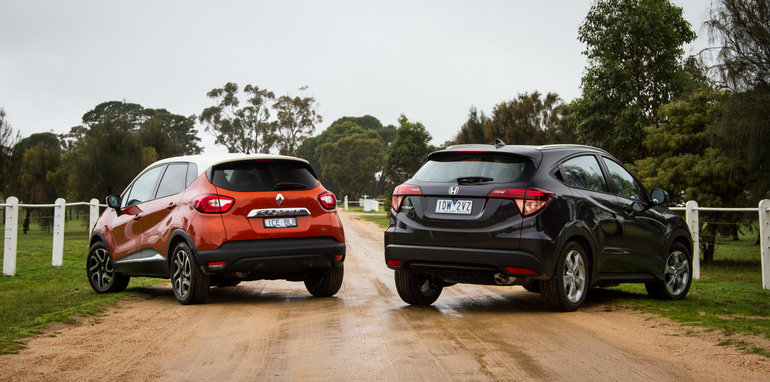
Presumptions prove incorrect, particularly in the case of the HR-V, now Honda’s biggest-selling model range locally â€" proof of broad appeal to a wide-ranging buyer set. On popularity, at least, it the guy to beat in this two-car test, though the Honda recently did come off second best in measures of value, dynamics and style against Mazda’s CX-3. Measures that loom large in rival Captur’s big pitch at baby SUV buyers.
Price and specifications
Both the HR-V VTi-S and Captur Dynamique want for an identical $27,990 before on-roads and options. The VTi-S represents the middle order of Honda’s three-tier range, one where all variants offer identical 1.8-litre four-cylinder, all-CVT automatic, front-driven powertrains.
The Dynamique TCe120, however, is the flagship Captur, featuring the ‘large’ 1.2-litre four-cylinder engine (against the 900cc entry three cylinder) and six-speed twin-clutch automatic transmission driving the front wheels.
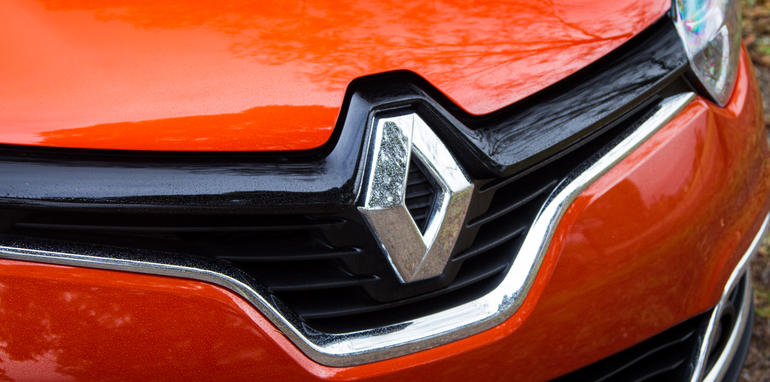
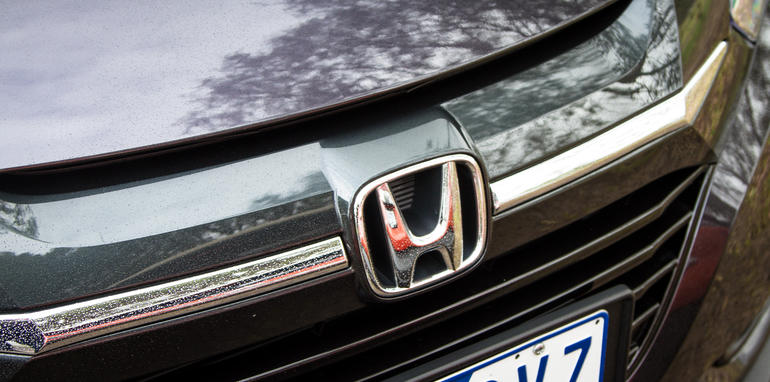
The list of standard features on both Renault and Honda can be found here.
The sole option fitted to our Captur, $28,590 as tested, is the Corsica interior pack ($600), which includes the graphic finish steering wheel, ‘frosted’ orange interior trim and removable seat covers to match the standard two-tone exterior paintwork. Meanwhile, our HR-V test car lands at $28,565, its only option Ruse Black metallic paintwork.
Styling and design
While the HR-V plays the maturity card in exterior design, it’s reasonably characterful and has a more contemporary feel than some Honda stablemates.
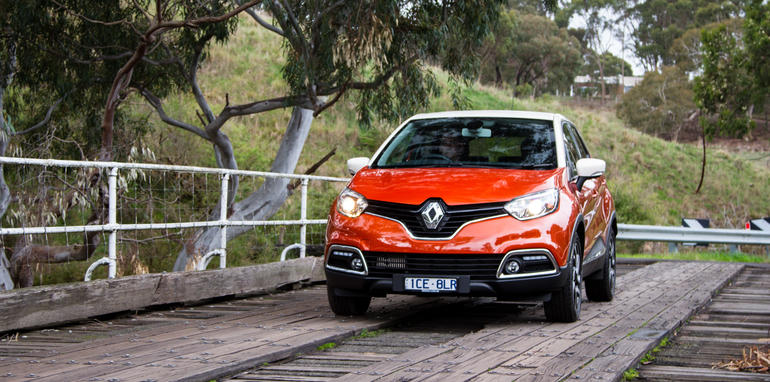
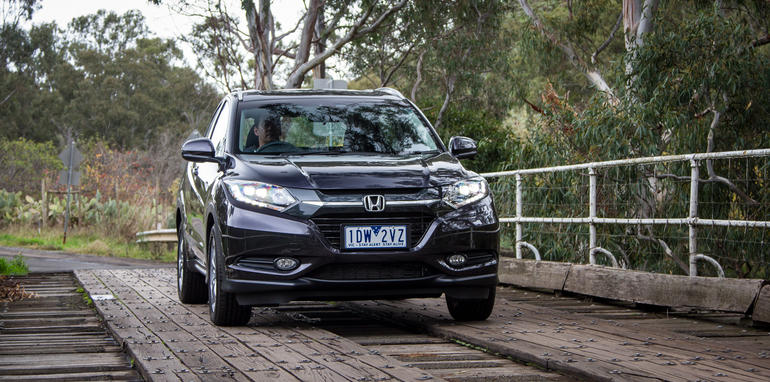
To my 45-year-old eyes it’s ‘dad friendly’, particularly in conservative body colours, which has no doubt impacted positively on its popularity in a segment often fixated with playing the youth appeal card and alienating older buyers. And yet it neatly sidesteps a ‘made for oldies’ aesthetic.
In heroic Arizona Orange and Ivory paintwork lashed with chrome bright work, the Renault couldn’t be funkier if James Brown took it to the bridge. Its blend of oh-so-French flair and overt sportiness is as polarising as it is charming; a flamboyance buyers might characteristically expect from the driving experience once behind the wheel.
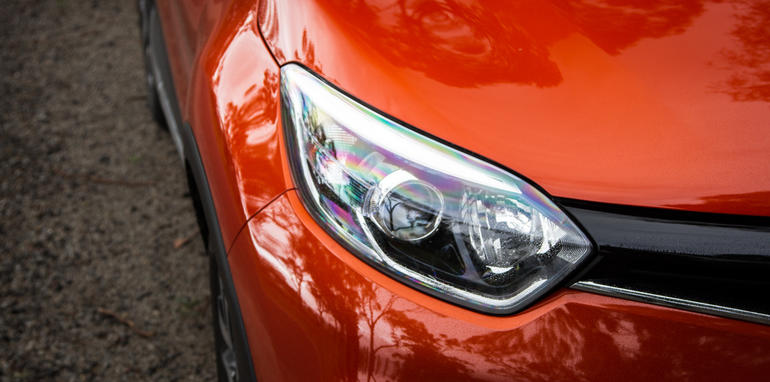
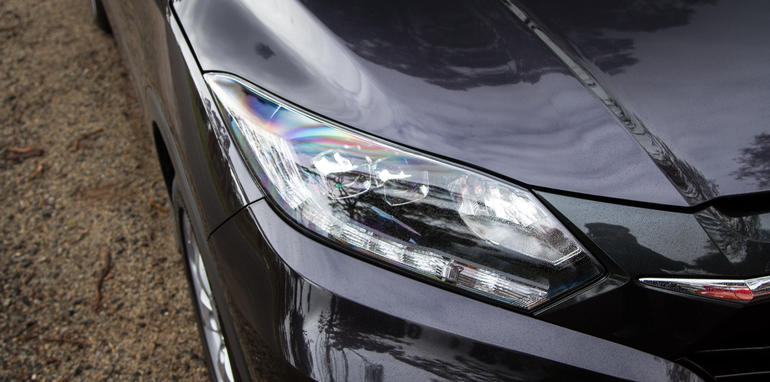
Interior
Thankfully, then, the Renault’s sensory assault doesn’t let up inside. The colours and contrasts, the textures and the design kitsch is leveraged to maximum effect, leaving Captur looking as if it’d crashed through a surf store en route to the showroom. Even when opting one of the many more-restrained colour combinations available.
The Honda cabin is safely inoffensive, though it’s reasonably classy and neat in execution. There are enough design details, such as the arching centre console and 3D-effect instrumentation, to rescue it from dull Japanese traditions and it feels a whole generation fresher than, say, its CR-V stablemate.
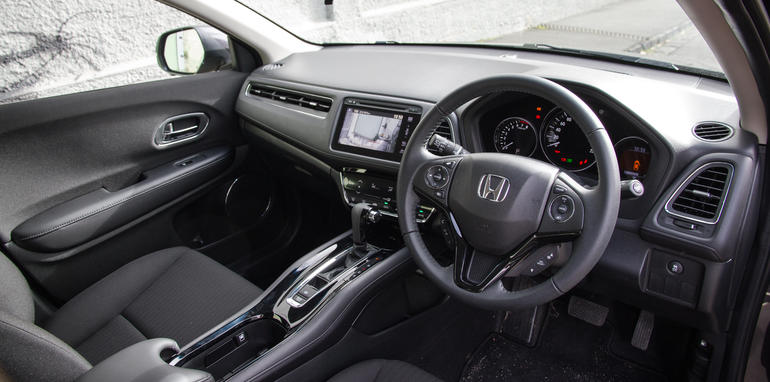
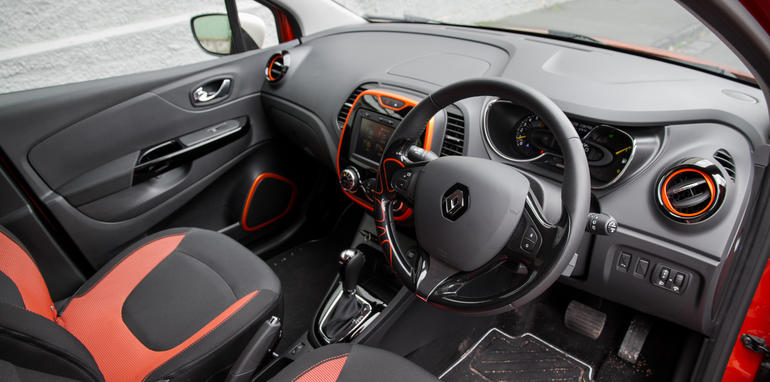
Of the two, the Honda has a more premium presentation, anchored by slighter nicer fit and finish and more tactile hard- and soft-touch materials throughout.
The polarity in approach is evident in spec highlights: the Renault offers bold steering wheel graphics and orange elastic strap map pockets in the seat backs; the Honda has fabric door trims and soft ambient lighting. The Honda favours piano black accents, the Renault loves its frosted metallic bronze.
While the HR-V has well-bolstered front sports-style seats in cloth trim that are at a comfortable height when climbing into or out of the cabin. The Captur’s, though, are lower slung, less cosseting and are ‘trimmed’ in (optional) slightly coarse-feeling synthetic seat covers, which are removable via plastic zippers. They’re washable, though the covers present unsightly wrinkles and crooked stitching. It’s a feature possibly better suited to fitness junkies who crawl through muddy bogs than parents with particularly grubby children.
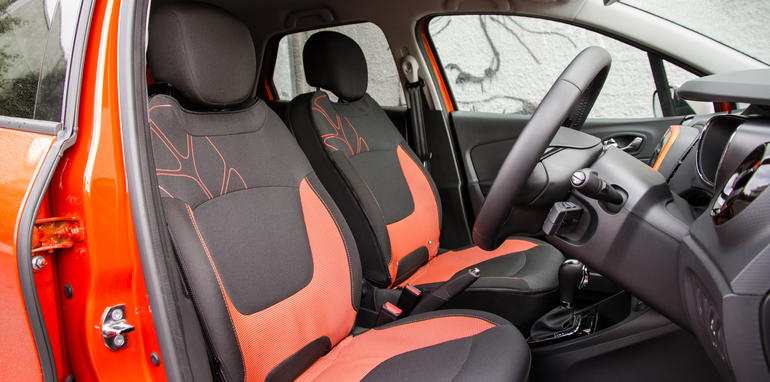
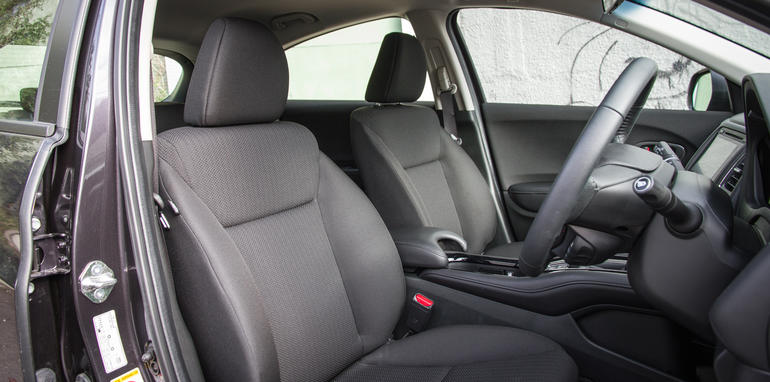
Instead, cost optioning leather, available in either compact SUV, is perhaps the shrewdest toddler-proofing measure.
Space? The Honda is a masterwork packaging â€" the absolute segment leader â€" and is generously roomy everywhere. The Renault has excellent headroom though space is otherwise reasonable rather than generous in both rows. Adults might find the Captur’s second row merely adequate for short-trip comfort.
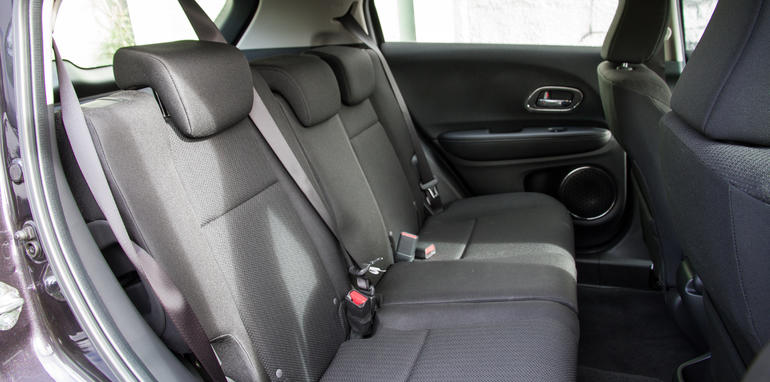
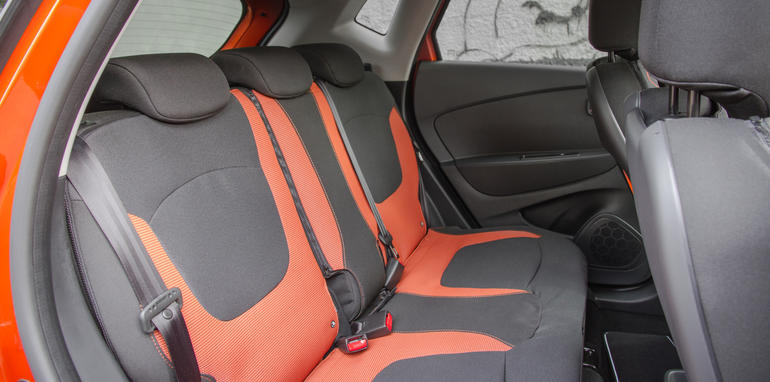
There are plenty of devilish details, too. The HR-V’s showpiece high-set centre console has nifty configurable cupholders and a (semi-obscured) device tray complete with two USB ports, an HDMI slot (for video and audio playback) and 12v auxiliary power. The touchscreen infotainment system is easy to use, colour configurable and integrates the useful passenger side camera system. And the techy driver’s instrumentation, too, does a neat colour shift to coincide with selecting drive modes.
The Honda does cop some markdowns, though. There’s no digital speedo, stop-start functionality or second row air ventilation. The app-based, Apple-only sat nav arrangement is limited in purpose compared with a proper proprietary system. The rear door bins are tiny thanks to audio speaker integration. And while a reversing camera and low-speed automated emergency city braking are standard, the lack of front and rear park sensors (otherwise available in the top VTi-L) is a glaring omission.
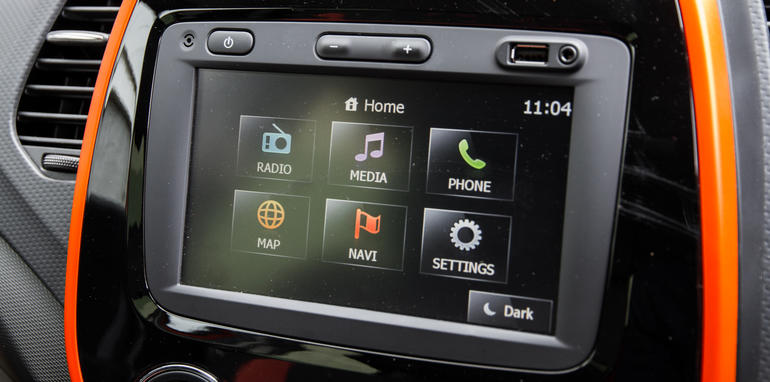
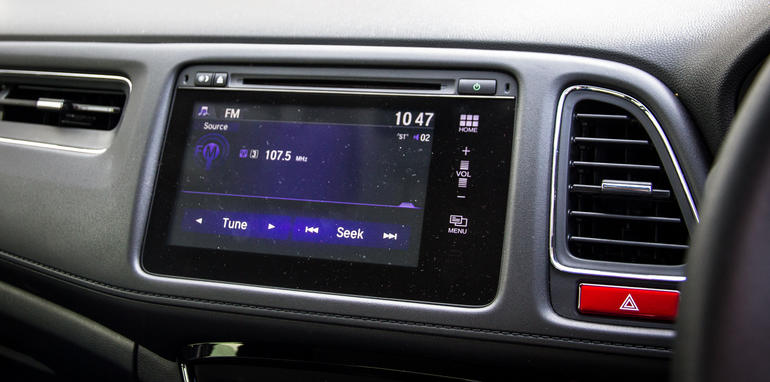
The Captur does get rear parking sensors and a conventional handbrake â€" a plus in many eyes â€" but only offers one 12v power supply in front with no power or air vents in the second row. There is a USB port up front though, annoyingly, it’s located just above the seven-inch touchscreen, leaving nowhere to neatly stow device cabling (or indeed the actual device). There is also no driver’s armrest and the cupholders are short and inadequate. It does, however, get a digital speedo.
Cargo area
The HR-V’s so-called Magic Seats, 60:40 split-foldable in the second row, are clever, easy to use one-handed and incredibly flexible in configuring the cargo area to suit anything from loading bikes to furniture. Rear seats up, cargo volume is 437 litres, expanding to a generous 1462 litres of total volume once the load floor is folded flat. The fabric parcel is foldable.
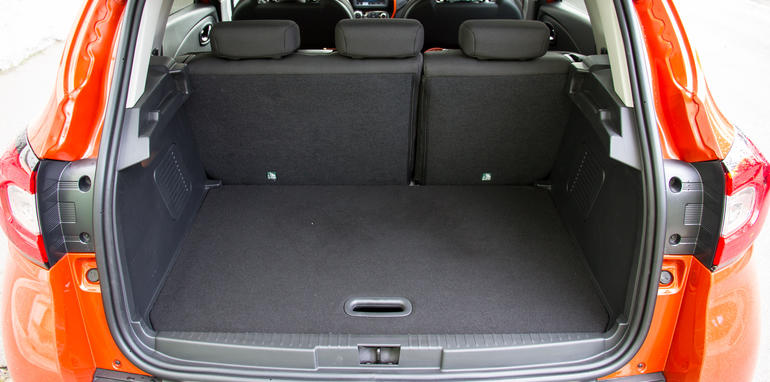
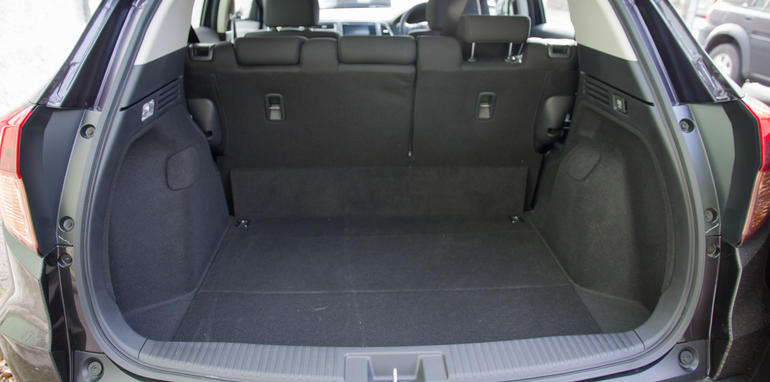
The Captur’s rear seats fold flat in one movement, converting 377 litres to a reasonable 1235L, the neat false floor arrangement adding load depth. The Renault’s rear seats set upright, though, can be slid 160mm forward for a handy 455L boot space. The false floor can be tilt-mounted, too, to help secure items such as grocery bags from moving around out back â€" clever stuff.
While we’re at it, both the Honda and Renault offer more luggage space than Mazda CX-3’s 264L and 1164L volumes.
Under the bonnet
The Honda steals the march on the Renault, figuratively and literally, once you’re on the move. And strangely so, given that the HR-V (1366kg in VTi-S spec) is both markedly heavier than the (1215kg) Captur and the 170Nm torque peak of the Honda’s naturally aspirated 1.8 is down 20Nm on the Renault’s turbo 1.2.
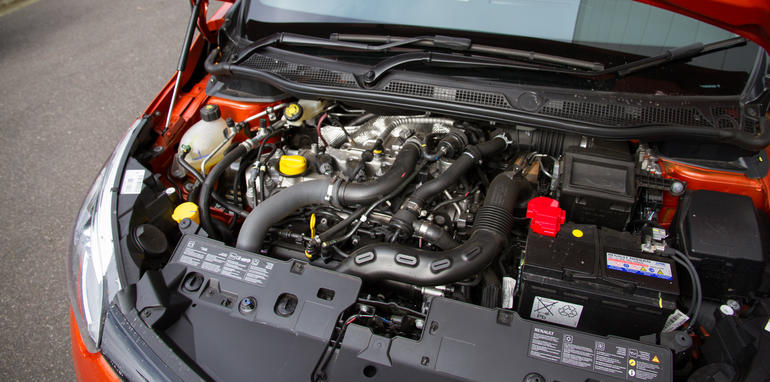
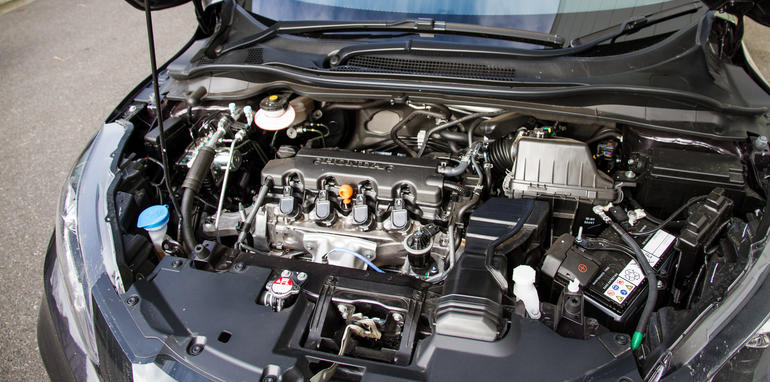
Yes, the Captur’s 88kW plays the HR-V’s 107kW, but it’s the Honda that noticeably more urgent off the mark and punchier through its engine’s mid-range. And while the Japanese baby SUV is no firecracker, it’s not left waning as much as the French device when diving for gaps around town, merging from motorway on ramps or departing from side streets.
The Captur is sluggish off the mark and lazy to respond on the move, even with the driver alone on board. Loaded with four adults and luggage â€" let’s say an extra quarter tonne â€" it’d demand patience tempered with frustration in most normal driving situations.
Not only is the Renault not as potent as its stats otherwise suggest, it’s not as frugal, either. The Captur’s combined consumption claim of 5.4L/100km â€" more glowing than its rival’s 6.9 figure â€" suffers under the throttle punishment required for normal progress. The result? Instead, both cars returned near identical high sevens, the Honda in a less strained manner.
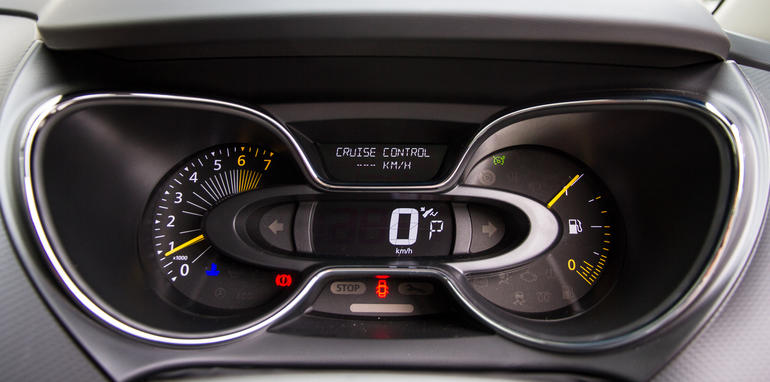
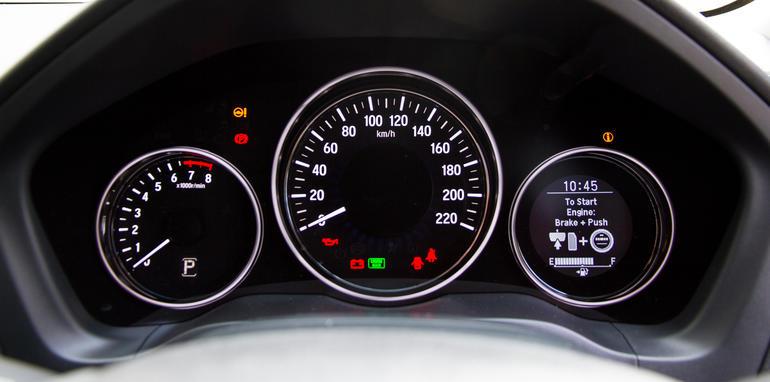
Frustrating the Renault’s progress is its dual-clutch transmission. It’s too lazy when self-shifting and its paddleshifted manual mode made largely redundant by the lack of engine pep. It’s a strange one â€" that same 1.2L turbo in slightly healthier tune as fitted to a manual Nissan Juke provides noticeably gutsier response, suggesting that Renault’s EDC transmission is partly to blame for the Captur’s lethargy.
The Honda’s continuously variable automatic, however, is attuned to its engine’s high (4300rpm) torque peak and offers a convincing seven stepped ratios in a sport mode: something the rival Renault’s gearbox wants for. Pushing the sport button adds noticeable and satisfying urgency to forward progress. That the CVT outdoes a dual-clutch for tangible performance is, frankly, a bit of a surprise.
On the road
Both have strut front/torsion beam rear suspension designs, the Honda’s tuned to strike a blend of comfort and body control â€" which it does with aplomb â€" while the Renault’s in a much firmer, sportier state of tune. The HR-V has a modest rather than dramatic lift in ride height and the driving experience is characteristically that of a proper small car, rather than merely being ‘car like’.
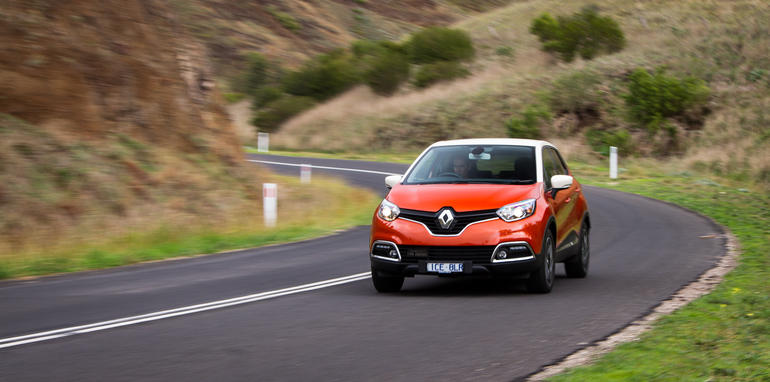
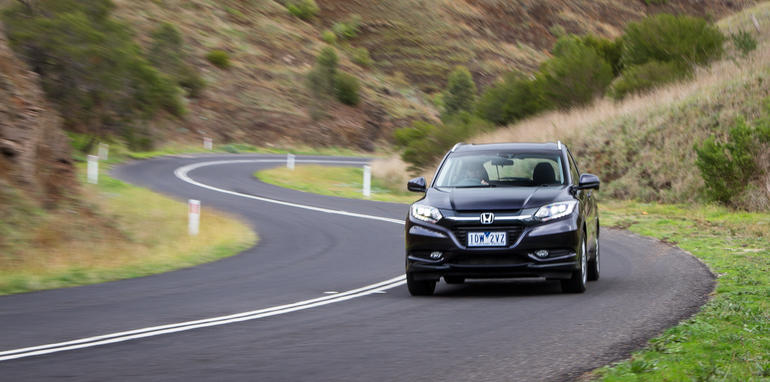
The Honda is quite softly damping, gets a touch floaty over road undulations and doesn’t quite have the tight body control of either the Captur or other small crossover rivals. However, add quality Dunlop SportMaxx rubber on 17-inch wheels (the base VTi gets 16s) and crisp, direct steering and the HR-V strikes a fine ride-handling balance around town. Some tyre noise notwithstanding, comfort is high without sacrificing a sense of connection with the road.
Comparatively, the Renault is Dynamique by name, dynamic by nature. There’s certainly a whiff â€" though only a whiff â€" of Renaultsport about the sharper steering, the grippier front end (despite narrower 205/55 17-inch Continentals) and a nice edginess to the chassis. And while it’s no hot hatch â€" nor pretends to be â€" that the French car delivers on the playful sportiness its bold aesthetic promises is a plus.
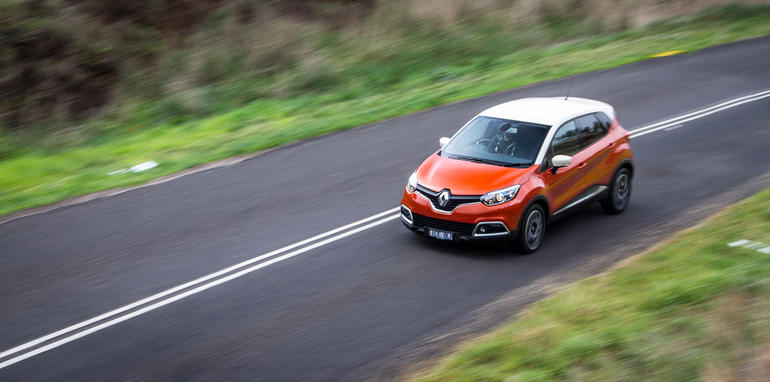
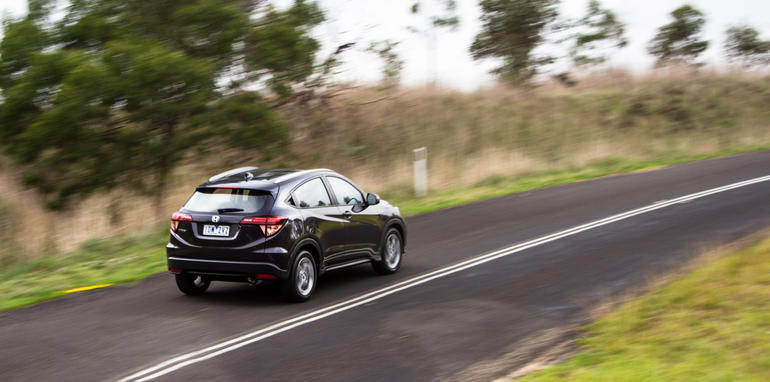
The downside, though, is that in ride quality and all-round comfort terms, it’s a harder car to live with around town, if one that thankfully stops short of being unpleasant. In short, the Honda comes closer to matching â€" and in pace terms, surpassing â€" the Renault for driving satisfaction out in the hills or the open road, but the French car struggles to rise to the Japanese challenge where it matters most for these types of cars: urban and city daily driving.
After-sales service
The Captur comes with a superior five-year/unlimited-kilometre warranty, with 12 month or 15,000kms (whichever comes first) service intervals capped at $299 apiece.
The Honda comes with a three-year/100,000kms warranty that can be extended, at a cost, to five years and 140,000kms including five years of roadside assist. Capped price servicing is covered for five years, with intervals spanning 10,000kms or 12 months, whichever comes first, at $298.00 each (the 10,000km service, however, is $284.00). Honda also requires additional-cost periodic items such as a dust and pollen filter ($44) and fuel filter ($298).
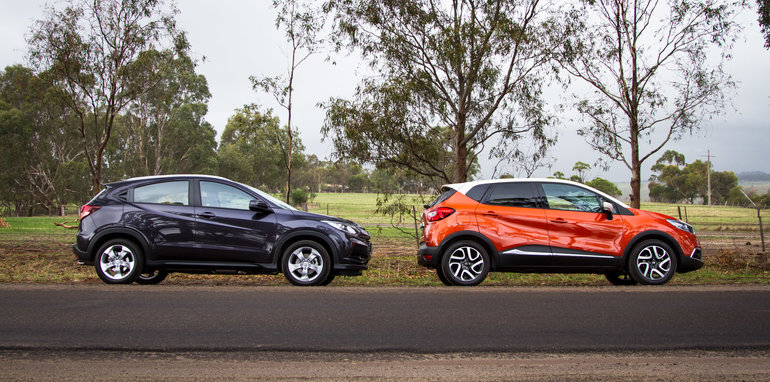
Verdict
With its blend of French flair, sporty appeal and playful dynamics, the Renault is bold statement. And one that will no doubt be a big drawcard for some buyers. It certainly nails the lifestyle angle with conviction.
The major shortfall with the Captur is that, despite the flexibility of the interior space, it’s not as confident as the Honda in meeting the core small SUV demands. When it comes to space, comfort, convenience and having the powertrain gusto to service the basics of hauling people and luggage, it plays a quiet second fiddle.
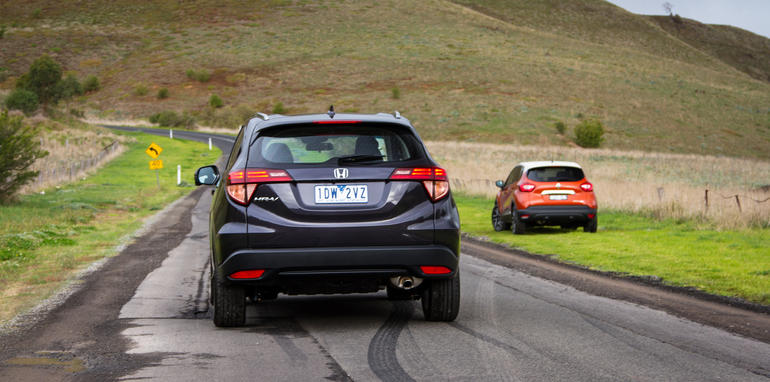
The Honda is simply a more well-rounded, more broadly capable device better suited to the urban environment and the daily grind.
Click the Photos tab for more images by Tom Fraser.
Comments
Post a Comment